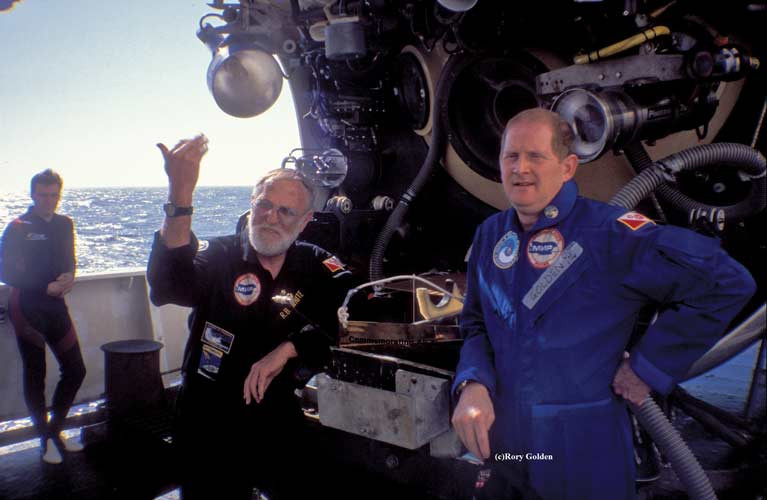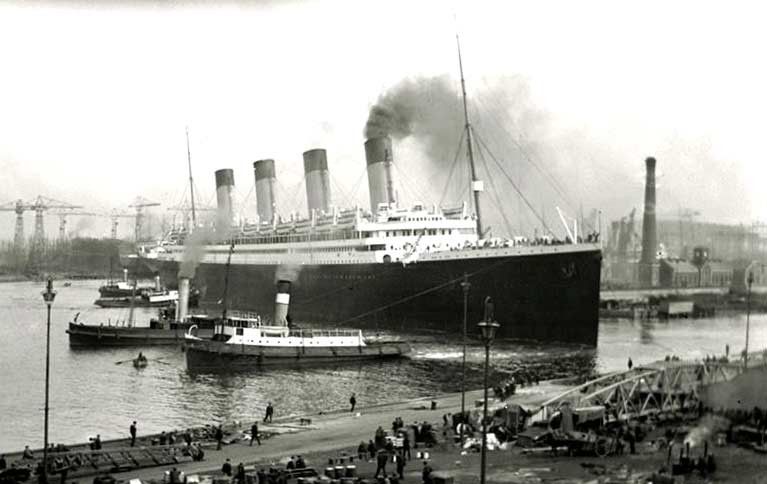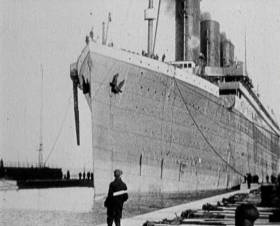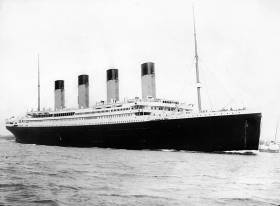Displaying items by tag: Titanic
Mini Submarine Will Take Paying Guests to Titanic’s Resting Place for First Time in 15 Years
For the first time in 15 years, paying guests will soon be taken nearly four kilometres beneath the ocean’s surface to visit the wreck of the RMS Titanic.
According to Bloomberg, a company called OceanGate Expeditions will launch its dive expeditions and research missions next May using a privately owned five-person mini-submarine.
And already more than 30 eager explorers have signed up at $125,000 (€105,260) apiece for the privilege of getting close to the remains of the ill-fated, Belfast-built ocean liner, which struck and iceberg in the North Atlantic in 1912 just days after her last port of call in Cobh.
While the planned deepwater voyages are for profit, the company insists that research is at their heart, and paying guests will take on the role of citizen scientists as they assist in a technical survey of the wreck site.
Bloomberg has much more on the story HERE.
RMS Titanic Comes Alive in Colour in New Book of Old Ireland
Old Ireland in Colour celebrates the rich history of Ireland and the Irish through the colour restoration of stunning images of all walks of Irish life, and the Irish abroad, throughout the nineteenth and twentieth centuries. From the chaos of the Civil War to the simple beauty of the islands, the book also includes retouched photos of RMS Titanic leaving Belfast Port. Each image has been exquisitely transformed and every page is bursting with life.
Old Ireland in Colour started in 2019 when John Breslin developed an interest in historic photo colourisation, enhancement and restoration through personal genealogical research. He began to
colourise old family photos – photos of his grandparents from Fanore in Co. Clare and Glenties in Co. Donegal. Using a combination of cutting-edge artificial intelligence technology and his own historical research, John moved from family photographs to photographs of Galway and Connemara, and then on to others taken across the island of Ireland in the nineteenth and twentieth centuries.
 On board the Titanic
On board the Titanic
 A first-class cabin interior on the Titanic
A first-class cabin interior on the Titanic
After a few months, the Old Ireland in Colour project was born. For this beautiful book, John has meticulously colourised a varied and fascinating selection of images, with breath-taking attention to detail and authenticity. With photographs from all four provinces, and accompanied by fascinating captions by historian Sarah-Anne Buckley, Old Ireland in Colour revitalises scenes we thought we knew, and brings our past back to life before our eyes.
 The front cover of the Old Ireland in Colour book that is out now
The front cover of the Old Ireland in Colour book that is out now
John Breslin is a Professor at NUI Galway, where he has taught engineering, computer science and entrepreneurship over a twenty-year period. Dr Sarah-Anne Buckley is a lecturer in History at NUI Galway and President of the Women’s History Association of Ireland. She is co-founder of the Irish Centre for the Histories of Labour and Class.
Irish Diver Rory Golden Consulted on New Expedition to Recover Titanic's Wireless Marconi Telegraph
Irish deep-sea diver Rory Golden is providing expertise to a new expedition to the Titanic which aims to recover the Marconi radio from the wreck, The Sunday Times reports.
The wireless Marconi telegraph was instrumental in saving more than 705 passengers from freezing Atlantic waters when the ship sank after striking an iceberg off Newfoundland in April 1912 with the loss of almost 1500 lives.
As Afloat reported previously, the ambitious project to retrieve the most famous marine radio in the world from 2.5 miles down in the Atlantic has finally secured legal approval.
The new expedition planned by RMS Titanic Inc, the salvor-in-possession, will be led by Dr David Gallo and French former naval officer Paul Henri Nargeolet.
Dublin-based Golden, who was the first Irish diver to visit the wreck site in almost 4,000 metres of water, has been engaged as a consultant to the company which has recovered over 5,500 artefacts in eight previous expeditions.
The former managing director of Virgin Records Ireland was dive safety operations manager for the Operation Titanic 2000 project which recovered 800 items - including the main ship’s wheel which he spotted. He returned in 2005 for a second dive, which was recorded in a BBC documentary.
In March 2013 he was a member of the team sponsored by Amazon.com founder Jeff Bezos which salvaged five Apollo F-1 rocket engines from 4200 metres in the North Atlantic, including one from Apollo 11 which launched a man to the moon in 1969.
Golden’s participation is one of several Irish connections to the new diving expedition which is expected to cost at least 10 million US dollars.
A Mayo community’s support for the new venture also helped to secure recently approved US Admiralty Court permission for it.
A letter to the US Admiralty Court from Addergoole Titanic Society director Toss Gibbons, secretary Mary Rowland and public relations officer Frank Gibbons urged that it would “give its blessing” to RMS Titanic Inc to undertake the expedition. The society remembers 11 of the ship’s fatalities from the Mayo village of Laherdane and surrounding area.
“We spent a lot of time in Ireland, in Belfast and with the folks in Addergoole to put a plan together which would satisfy the court,” RMS Titanic Inc president Bretton Hunchak said.
The recovery of the Marconi telegraph is crucial to understanding “the story of all of the survivors”, Hunchak explained.
 The Marconi Telegraph room as seen from the top of the Titanic Photo: Rory Golden
The Marconi Telegraph room as seen from the top of the Titanic Photo: Rory Golden
“Ultimately, the Marconi radio system remains an unsung hero, responsible for countless generations of families that exist only because the radio cried out on behalf of their ancestors,” he said.
“ For that reason, we must recover this incredible piece of history, to rescue the radio that saved 705 lives from being taken from the world that fateful night."
 The hatch to the Marconi Room Photo: Rory Golden
The hatch to the Marconi Room Photo: Rory Golden
Hunchak said the original plan for the expedition was within a weather window between June and August of this year, and that might still take place.
“Obviously, with the Covid-19 pandemic, we have questions now and will make a decision on timing very shortly,” he said.
“The Marconi telegraph is recognisable, from our underwater photography, but if we recover it there will be considerable conservation required before we can take it around the world as part of our exhibition of artefacts,” he said.
Golden said the project was “fraught with a lot of unknown and known variables, such as the condition of the roof area, the wreck itself, currents, visibility” and other factors, but has “a very good chance of succeeding”.
The wreck of the Titanic was discovered by Dr Robert Ballard and Jean Louis Michel in a joint US/ French expedition on September 1st, 1985, some 963 miles northeast of New York and 453 miles southeast of the Newfoundland coastline.
More on the Sunday Times report here
Titanic’s Belfast & Dublin Links Remembered With Retrieval of Sunken Ship's Marconi Radio
An ambitious project to retrieve the most famous marine radio in the world from 2.5 miles down in the Atlantic has finally secured legal approval. The saving of the Marconi radio which sent out the distress signals from the sinking Titanic after she'd struck a North Atlantic iceberg en route to New York on 14th April 1912 has finally been given approval in a US court. And if the project is successful, it will be a very tangible reminder of a special link between Belfast and Dublin.
The Titanic was built in Belfast in a massive seven-year project between 1907 and 1912, and towards its conclusion, her legendary “Radio Shack” was installed with the latest in marine radios from the Marconi company. The company was founded and its best ideas provided by Gugliemo Marconi, whose father was Italian, but whose mother was Annie Jameson of the long-established Dublin whiskey-distilling company, a family renewed for their long and successful association with sailing.
This had been underlined in 1904 when the young Marconi’s new invention was used to transmit sailing results for the first time ever from an event afloat to national newspaper, the event being the regatta of Royal St George Yacht Club in Dublin Bay. The Jameson family had been closely associated with the club since at least the 1840s, and possibly since its formation in 1838.
The Guardian has the story of the proposed radio retrieval here
 Make mine a Jameson……radio pioneer Gugliemo Marconi definitely had the look of one of the more serious Jamesons, which is not surprising as his mother Annie was of the famous Dublin whiskey-distilling family
Make mine a Jameson……radio pioneer Gugliemo Marconi definitely had the look of one of the more serious Jamesons, which is not surprising as his mother Annie was of the famous Dublin whiskey-distilling family
Titanic Walkway's Great Light on Belfast Lough
At the end of the 500 metre Titanic Walkway which connects the Titanic and Olympic Slipways to the Alexandra Dock in Belfast’s Titanic Quarter, proudly sits The Great Light, a curved glass interpretive structure designed to resemble a lighthouse lantern room. The lens inside began life atop the lighthouse on Tory Island and in the 1920s replaced the Mew Island light on one of the three Copeland Islands off the North Down Coast. It’s journey to the Walkway was by helicopter, the ILV Granuaile and a store in Dun Laoghaire.
The Copelands lie on the south side of the North Channel, and posed a great danger to shipping, especially when trade in and out of Belfast Harbour increased. Over three hundred years ago the first Lighthouse was built on Lighthouse Island but as Mew Island was more difficult to see, especially at night, a new one was built there in 1884.
In the 1920s the Mew Island light was reported to be flashing irregularly so in 1928 it was replaced with eight of the lens panels from the Hyper - Radial Optic on Tory and it is this light which has earned a place in the world-famous Titanic Quarter.
The Great Light, at seven feet tall, is one of the largest optics of its kind in the world and weighs 10 tonnes. This irreplaceable heritage object is hugely significant to Belfast’s economic, maritime and industrial past.
By the 21st century, advanced light technology meant the lighthouse’s huge lens was no longer needed and in 2014 they were replaced by solar panels, a LED light, a radar beacon and AIS.
Recognising the Light’s historical importance, the Titanic Foundation charity was awarded funding for saving, restoring and displaying the optic, and with the help of many organisations including the Commissioners of Irish Lights who contributed and restored the optics, Belfast Harbour who donated the site and the Titanic Quarter who provided the Walkway, the Great Light can now be viewed by the public.
During sixteen weeks work in 2015, many parts were helicoptered to the Granuaile, the heaviest parts were towed under a buoy to the ship and the Irish Lights vessel took all the optic’s parts to Dun Laoghaire. Finally, the site was opened in November 2018 and with free public access, it tells the story of lighthouses, their technological development, the keeper and their role in the maritime and industrial history of Belfast and Ulster.
Titanic Quarter Welcomes 'Belfast Buoys'
Deputy Lord Mayor of Belfast, Councillor Peter McReynolds, has attended an event today to welcome the Belfast Buoys to their new home in Titanic Quarter, where they will remain on permanent display.
The buoys were given to Belfast City Council by the Commissioners of Irish Lights in 1983 and originally located in the Cathedral Gardens, which became affectionately known as 'Buoy Park'.
Regeneration of the area around Ulster University and the development of Titanic Quarter prompted plans for the buoys to find a new home near Abercorn Basin, as part of the Department for Communities’ Streets Ahead Project.
In January 2019, the landmarks were taken to the Irish Lights headquarters in DunLaoghaire for restoration. The distinctive buoys - which celebrate the city's maritime heritage – took up residence on the quays just as the Tall Ships arrived for the Belfast Titanic Maritime Festival.
Each buoy weighs around 3 tonnes and is made of thick steel plates riveted together. They are hollow structures, filled with air to allow them to float, and they would have been secured in place by mooring chains, attached to a cast iron sinker sitting on the seabed.
Deputy Lord Mayor of Belfast, Councillor Peter McReynolds, said: “It is wonderful to visit the Belfast Buoys and to see these iconic symbols of Belfast at their new home. Given their proximity to the water, in such a popular area for locals and tourists, their move to Titanic Quarter is very fitting.
“Belfast City Council, along with our city partners, is committed to increasing the value of tourism by £500 million by 2021 as part of the Belfast Agenda, the community plan for the city. Capitalising on our rich maritime heritage is an important part of the mix, and relocating the buoys to the Maritime Mile will assist by adding to the area’s growing appeal to visitors.”
James Eyre, Commercial Director of Titanic Quarter Ltd, said: “We are delighted that these iconic landmarks have been relocated to Titanic Quarter and we are very grateful for the support and dedication from our partners; Titanic Foundation, Belfast City Council, Department for Communities, Belfast Harbour and Commissioners of Irish Lights, for delivering such a fantastic project. Known for its rich maritime heritage, Titanic Quarter attracts 1 million visitors annually and has acquired the status of a premier global destination for leisure and business tourism. We look forward to welcoming more visitors to the Buoys over the summer months.”
Kerrie Sweeney, Chief Executive of Titanic Foundation, added: “We would like to thank the Commissioners of Irish Lights who have restored the buoys and repainted them in their traditional navigational colours. The three buoys are estimated to be around 80 years old, and would have been used by mariners to find a safe channel to and from port. Similar buoys would have been used in Belfast Harbour, marking the edges of the narrow Victoria Channel. The Buoys are an amazing addition to the Maritime Mile and it’s a fantastic opportunity for everyone to explore the city’s rich maritime heritage.”
Mark O’Donnell from the Department for Communities said: “The Department is delighted to assist in the relocation of the Belfast Buoys from their old location in Cathedral Gardens to their new home in the Titanic Quarter. The new installation will complement the other unique attractions that are part of the Maritime Mile whilst also allowing for the redevelopment of Cathedral Gardens into an exciting new civic space.”
Collective shame about the Titanic’s sinking, accounts by survivors, Belfast shipyard Harland and Wolff’s role, and fears by some local politicians some decades later of a “Dublin-based developer” coming to “rape and pillage” are among themes explored in a documentary due to be broadcast on TG4 television next week.
Extensive archive footage and interviews with renowned Titanic experts form the basis for City of a Thousand Launches (italics), which was made five years ago and focuses on Northern Ireland’s links with one of the worst maritime disasters of the early 20th century – described as the “9/11” of 1912.
Over 1500 people died and over 700 were rescued when the Belfast-built passenger liner sank after hitting an iceberg off the Newfoundland coast on April 14th-15th, 1912, while en route from Southampton to New York.
British Queen Elizabeth, former US secretary of state Hillary Clinton and the diver who discovered the wreck of the ship, Dr Robert Ballard, number among over five million people from 145 countries who have visited the award-winning Titanic Belfast visitors’ centre. However, for decades, Belfast people did not talk about the ship, and it was James Cameron’s epic 1997 film which is said to have shifted attitudes.
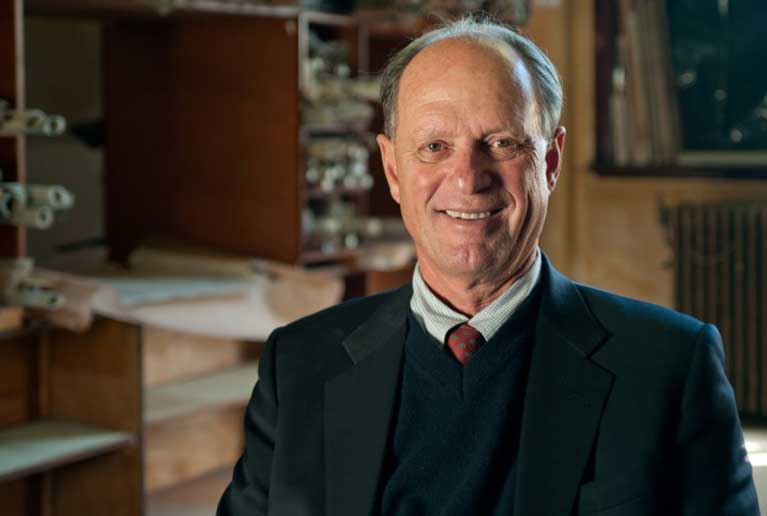 Dr Robert Ballard – the diver who discovered the wreck of the ship
Dr Robert Ballard – the diver who discovered the wreck of the ship
“They thought that it was their fault,” Dr Ballard says, while Rev Chris Bennett, an avowed “Titanorack”, articulates the shame felt about the shipyard’s connection.
The documentary charts how after the Harland and Wolff shipyard, once employer of over 30,000, was sold for redevelopment and how there was a fear among some city councillors “ about a Dublin-based developer coming up to Belfast to…rape and pillage”.
US architect Eric Kuhne’s design for the “Titanic quarter” waterfront area, and the concept of a world class visitor centre, reflected the city’s changed attitude towards the ship, but the documentary explores the struggle to realise the vision and the risk taken by Donegal developer Pat Doherty to start building with no official contracts in place.
“ That was it, this sucker was getting built…and it was getting built with a vengeance!” Kuhne recalls.
Titanic Belfast - City of a Thousand Launches will be broadcast on TG4 on April 10th at 9.30pm.
Titanic Sank After Fire, Not Iceberg Collision, Says New Evidence
#Titanic - For decades it was believed that the ill-fated Titanic was sunk by an iceberg on its maiden transatlantic voyage.
Indeed, the dramatic collision and its aftermath has long been etched on the Irish consciousness, and was the centrepiece of 1997’s Oscar-winning epic.
But now experts have claimed that the iceberg was only the final straw of a calamitous journey whose fate was sealed by an unnoticed fire in its hull some three weeks before, as Independent.ie reports.
Previously only theorised by experts on the ocean liner and its demise in 1912, the fire’s status as the primary cause of the Titanic’s demise has now been all but confirmed after new analysis of photographs of the vessel before it left the Harland & Wolff shipyard in Belfast.
These appear to show scorch marks on the hull close to the spot where it was later breached by contact with the iceberg — lending credence to the idea that the ship was already fatally weakened by the incredible heat of a fire inside.
Journalist Senan Molony, who fronted a Channel 4 documentary on his findings on New Year’s Day, also makes the bold claim that the White Star Line covered up the fire incident even before the Titanic launched from Southampton.
“Nobody has investigated these marks before,” said Molony. “It totally changes the narrative.”
Independent.ie has much more on the story HERE.
Titanic Quarter Company Warns of Brexit Impact
#TitanicBrexit - Belfast’s Titanic Quarter, which is home to Northern Ireland’s and Europe's most popular tourist attraction, has reported losses for last year of £333,111 (€383,329), newly filed accounts show.
Titanic Island Limited, which controls the group of companies working in the quarter, said pretax losses narrowed from £1.16 million in 2014. The group previously reported a £68,000 loss for 2014, down from £33.9 million in 2013. It said the previous year’s results had been restated due to a transition to the FRS 102 reporting standard.
Turnover totalled £10.9 million for 2015 with operating profit rising from £1.96 million to £2.49 million.
For more on the potential of the Brexit impact to one of the world’s largest urban-waterfront regeneration projects, the Irish Times has a report by clicking here.
New Book Delves Into Fate Of Titanic Sister Ship
#Britannic - A new book promises to answer what really happened to a sister ship of the Titanic that met a similar fate, as the Belfast Telegraph reports.
Mystery of the Last Olympian tells the story of the Britannic, which sank in the Aegean Sea following a explosion on 21 November 1916 while drafted as a hospital ship during the First World War.
All but 30 of its 1,065 passengers and crew were rescued after the incident, which saw the ship go under twice as fast as the ill-dated Titanic more than four years earlier.
And the facts of the Britannic's demise have been a mystery ever since, with claims that the vessel struck a German mine dismissed by others who believe a U-boat torpedo was to blame.
Co-author Richie Kohler, the only person to dive both the Titanic and Britannic wrecks, also set out to discover if structural changes to the latter vessel would indicate that Harland & Wolff and the White Star line "had reason to believe the Titanic had broken apart on the surface - a claim refuted at the time."
The Belfast Telegraph has more on the story HERE.





























